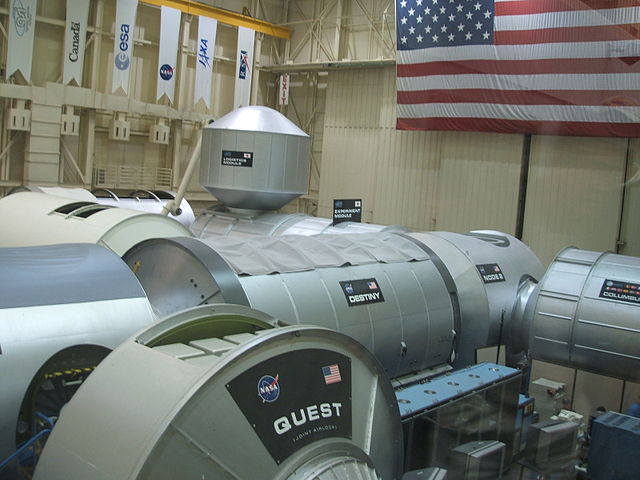STS-133 was the 133rd mission in NASA's Space Shuttle program; during the mission, Space Shuttle Discovery docked with the International Space Station. It was Discovery's 39th and final mission. The mission launched on February 24, 2011, and landed on March 9, 2011. The crew consisted of six American astronauts, all of whom had been on prior spaceflights, headed by Commander Steven Lindsey. The crew joined the long-duration six person crew of Expedition 26, who were already aboard the space station. About a month before lift-off, one of the original crew members, Tim Kopra, was injured in a bicycle accident. He was replaced by Stephen Bowen.
Canadarm2 installs the PMM Leonardo
From left to right: Alvin Drew, Nicole Stott, Eric Boe, Steven Lindsey, Michael Barratt and Steve BowenSpace Shuttle program← STS-132STS-134 →
PMM Leonardo at the Space Station Processing Facility (SSPF).
The ELC-4 being lifted from its work stand in the SSPF.
Assembly of the International Space Station
The process of assembling the International Space Station (ISS) has been under way since the 1990s. Zarya, the first ISS module, was launched by a Proton rocket on 20 November 1998. The STS-88 Space Shuttle mission followed two weeks after Zarya was launched, bringing Unity, the first of three node modules, and connecting it to Zarya. This bare 2-module core of the ISS remained uncrewed for the next one and a half years, until in July 2000 the Russian module Zvezda was launched by a Proton rocket, allowing a maximum crew of three astronauts or cosmonauts to be on the ISS permanently.
International Space Station mockup at Johnson Space Center in Houston, Texas.
Columbia lifting off on its final mission.
10 March 2001 – The Leonardo Multi-Purpose Logistics Module rests in Space Shuttle Discovery's payload bay during STS-102.
Construction of the International Space Station over New Zealand.








